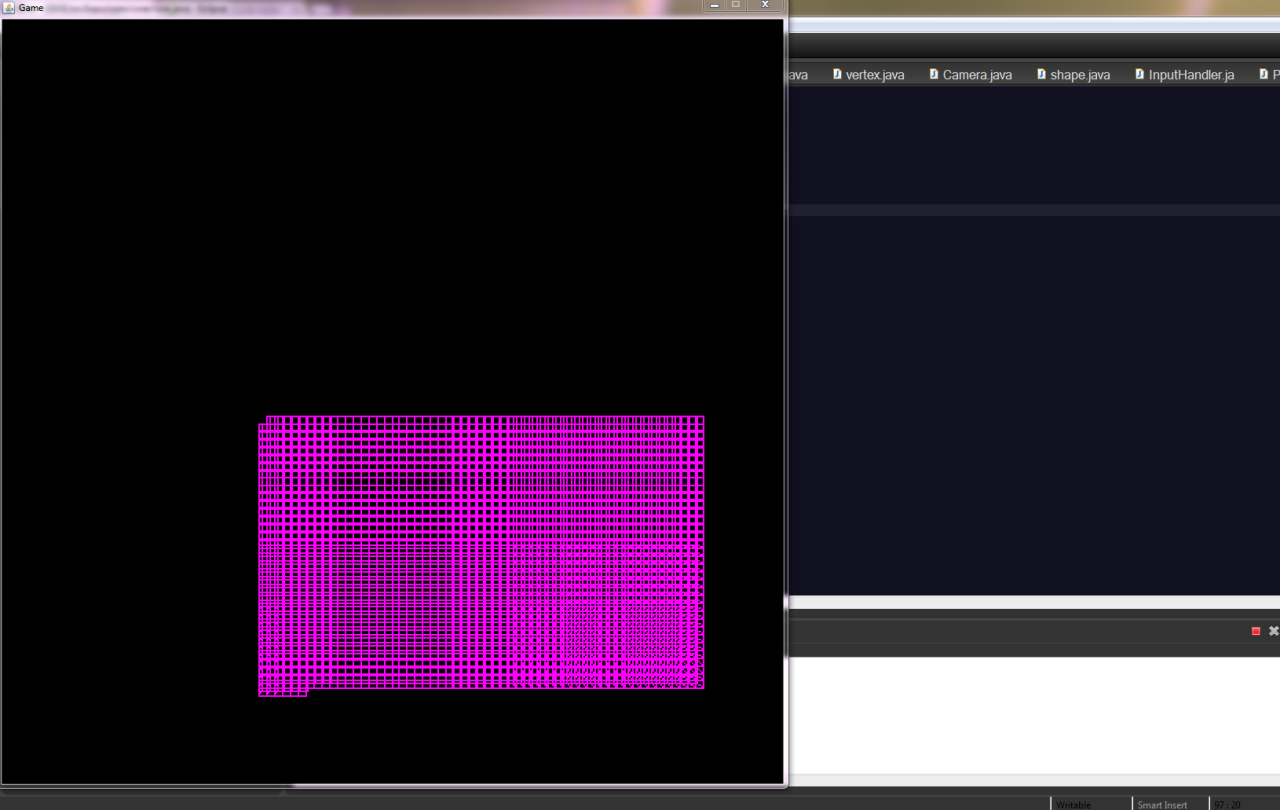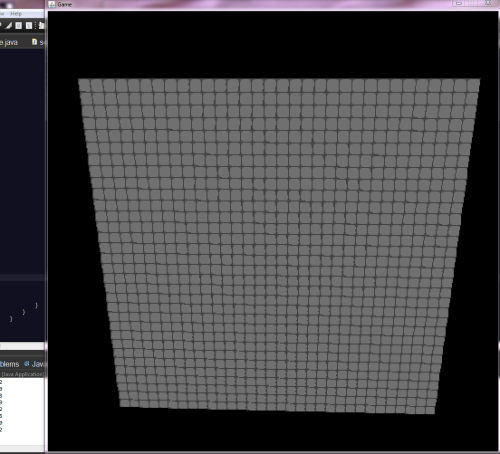Ive been working on a 3d game engine written in pure java and I have a version Im happy to show.
current support:
basic shapes such as squares
drawing vertexs
functional camera
3d line renderer
infinate 3d plane
Full bitmap texture support
future support:
More complex shapes such as tetrahedrons
optimising rendering algorithms and determining weather and object is behind the camera (working on currently)
support for a map array to store blocks
The updated code will happily render 4000 cubes (no line removing algorithms for things like behind block) at 30 fps when the camera is focusing on a few a constant 200 fps can be expected
here is the picture!
http://gyazo.com/d40e865eb0bace45c9c47fb70f529729
a wall of 2000 blocks (using a slightly more optimised code) at 50 fps
More progress to come in the future!
#######update!#######
So I have been considering merging my old 2DGE project some of you might remember. However they will both be rewritten from scratch ( on the 3DGE just optimisation will occur) This will be released as a full graphics engine sometime in the future quite far in the future as I have a large amount of school work.
Also a quick note, I have finalised the algorithm for rendering textures on the side of object (it will support custom image sizes in the future) For now its 32 by 32 for simplicity. More features such as a cameracontroller and an actual release will come soon when basic support for cubes and face rendering only if visible.
LATEST UPDATE: TEXTURES!
fully supporting all size textures I would like to thank this genius over here ----> http://www.java-gaming.org/index.php?topic=25271.0 Of course the code isnt perfect when implemented in mass so im doing some optimisations but I was struggling to understand it until I saw that so big thanks.
Welp time for the pics!
With a few more frame tests I have massive improvements. the ability to render 500,000 textured and scaled triangles at 10 fps.




 gotta love it! This is pretty cool. can I ask where exactly you got the math from?
gotta love it! This is pretty cool. can I ask where exactly you got the math from?
